Like Father, Like Son?
January 28th, 2020
6 minute read
The interim between World War I and World War II was a tumultuous, confusing abyss of martial stagnation and geopolitical intrigue. While the Axis powers shoved their military development and production apparatus into overdrive, over on our side of the pond powerful forces lobbied to keep us out of the inevitable next global conflict. As a result, American weapons did not necessarily represent the state of the art when the 1930’s tepid war finally turned truly toasty. There was, however, one gleaming exception.
When the U.S. was dragged kicking and screaming into World War II, the battle rifle that our grunts wielded was light years ahead of practically anything anyone else fielded. The semi-automatic M1 rifle was quite literally a game changer. To comprehend the gravity of this remarkable contrivance, we need to establish some terminology.
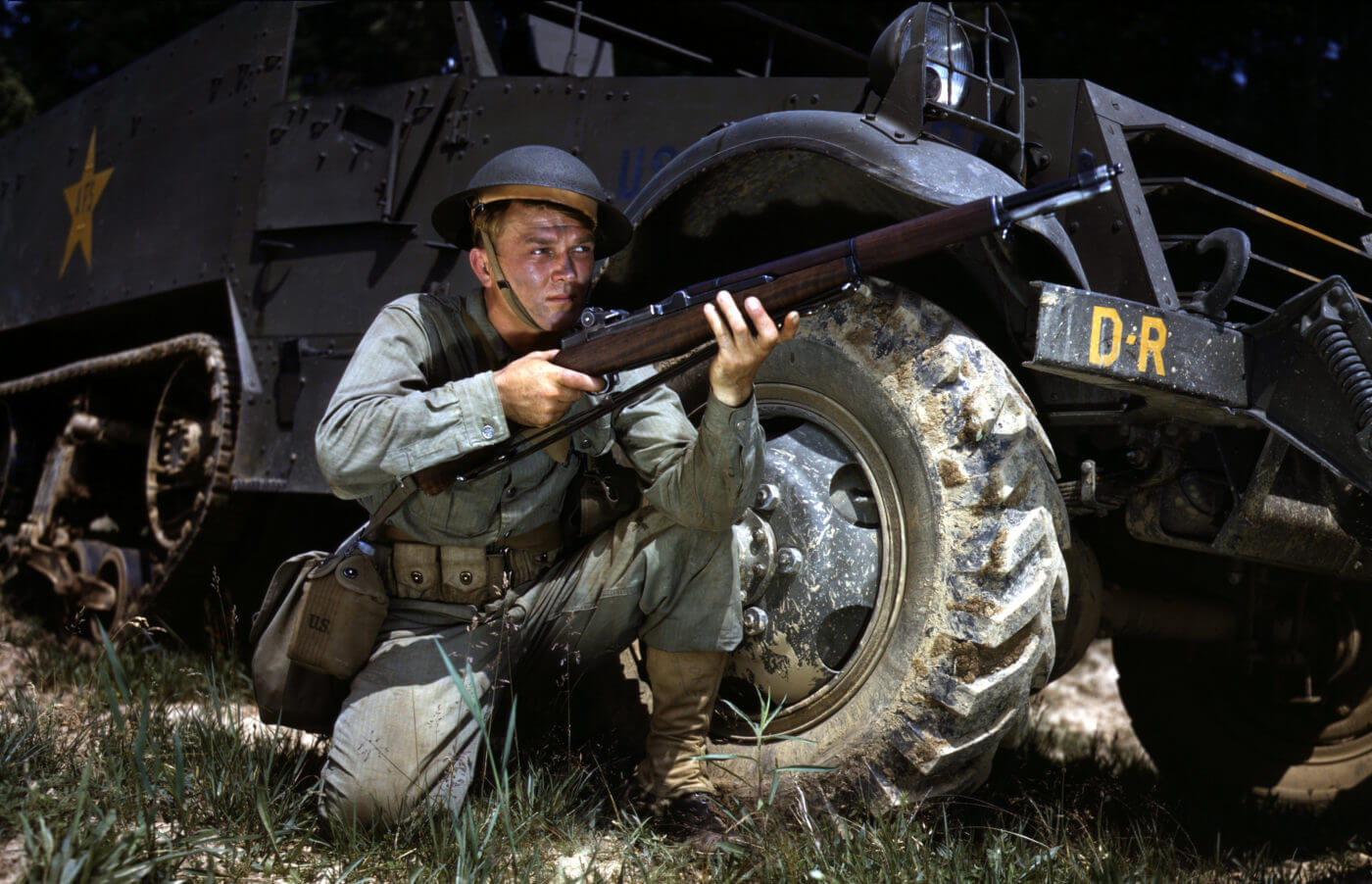
We generally call this remarkable weapon the M1 Garand (correctly pronounced, I’m told, as “Gerrund,” not “G’rand.”) However, the M1 Carbine was the “Carbine,” and the M1A1 Thompson was the “Thompson.” What we call the Garand was invariably referred to simply as the M1 by the GI’s who wielded it.
The Revolutionary
French Canadian John Cantius Garand built his eponymous M1 around a fascinating en bloc clip-fed operating system. En bloc is actually a mid-19th century French adverb meaning “all together” or “all at the same time.” As it relates to the M1, this means that the gun’s action wraps around a spring steel 8-round disposable clip. Once charged into the weapon the clip becomes an integral part of the action.
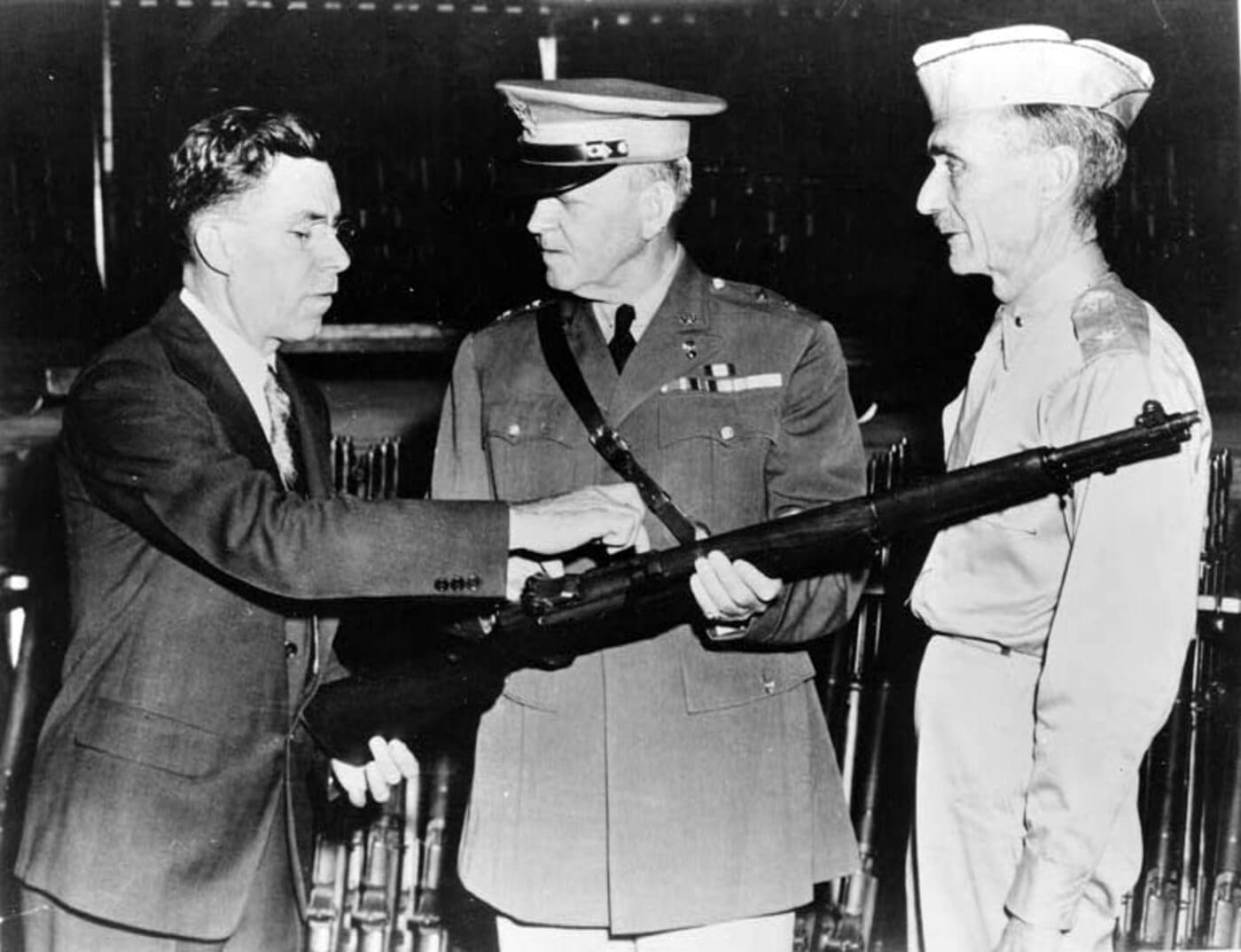
To run the M1 you pull the bolt to the rear where it locks automatically. Insert an 8-round clip from the top using your thumb. Once the clip is fully seated the bolt closes of its own accord and chambers the first round. While I have never myself gotten my thumb stuck in an M1 action, I should intuitively suspect that it would suck.
On the eighth round fired, the action locks open and the empty clip springs forth from the bowels of the thing. Repeat as necessary. Much hay has been made over the springy sound the clip makes when it is ejected. However, I have had the misfortune of being in the presence of military gunfire without hearing protection. I can’t see anybody noticing that myself.

The M1 in the hands of American grunts at the head of a truly breathtaking logistical chain that kept all four million copies fed did indeed help win World War II. However, military technology veritably exploded during the wartime years, and what was cutting edge in 1940 was becoming cumbersome five short years later. In a landscape now populated with the likes of the StG44 assault rifle and soon later the select-fire AK-47, the M1 needed an upgrade.
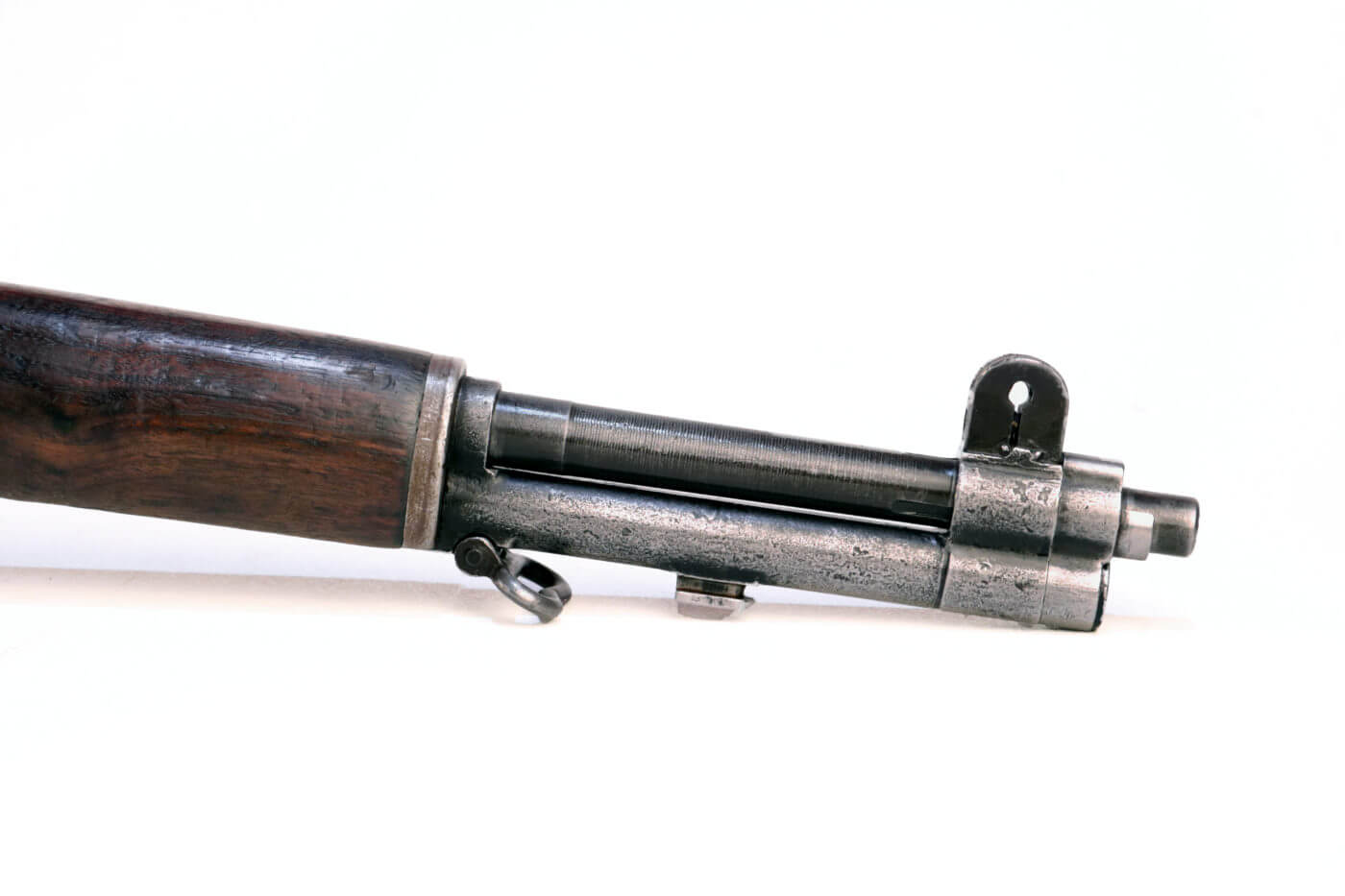
Battle of the Rifles
The development of the subsequent M14 was an acrimonious slugfest characterized by nepotism, politics, and rampant unfiltered bias. There were three major contestants. Each weapon fired the new 7.62x51mm round.

The protype that ultimately became the M14 was titled the T44. The T48 was an Americanized version of the FN FAL. The T47 was a sort-of M14 that lacked such niceties as a bolt roller. The T47 fared poorly in cold weather and dusty environments and died a natural death.
The T44 engineers purportedly enjoyed an unfair advantage during arctic tests, so their rifles significantly outperformed the T48 and the T44 took home the gold. After a wee tweak or two, the T44 became the definitive M14.

Thanks to improved ball powders developed by Olin, the 7.62x51mm offered comparable performance to the previous 7.62x63mm (.30-06) round fired by the M1. The new rifle fed from a 20-round detachable box magazine and incorporated a streamlined gas system as well as a generous slotted flash suppressor. The new M14 was also selective fire.
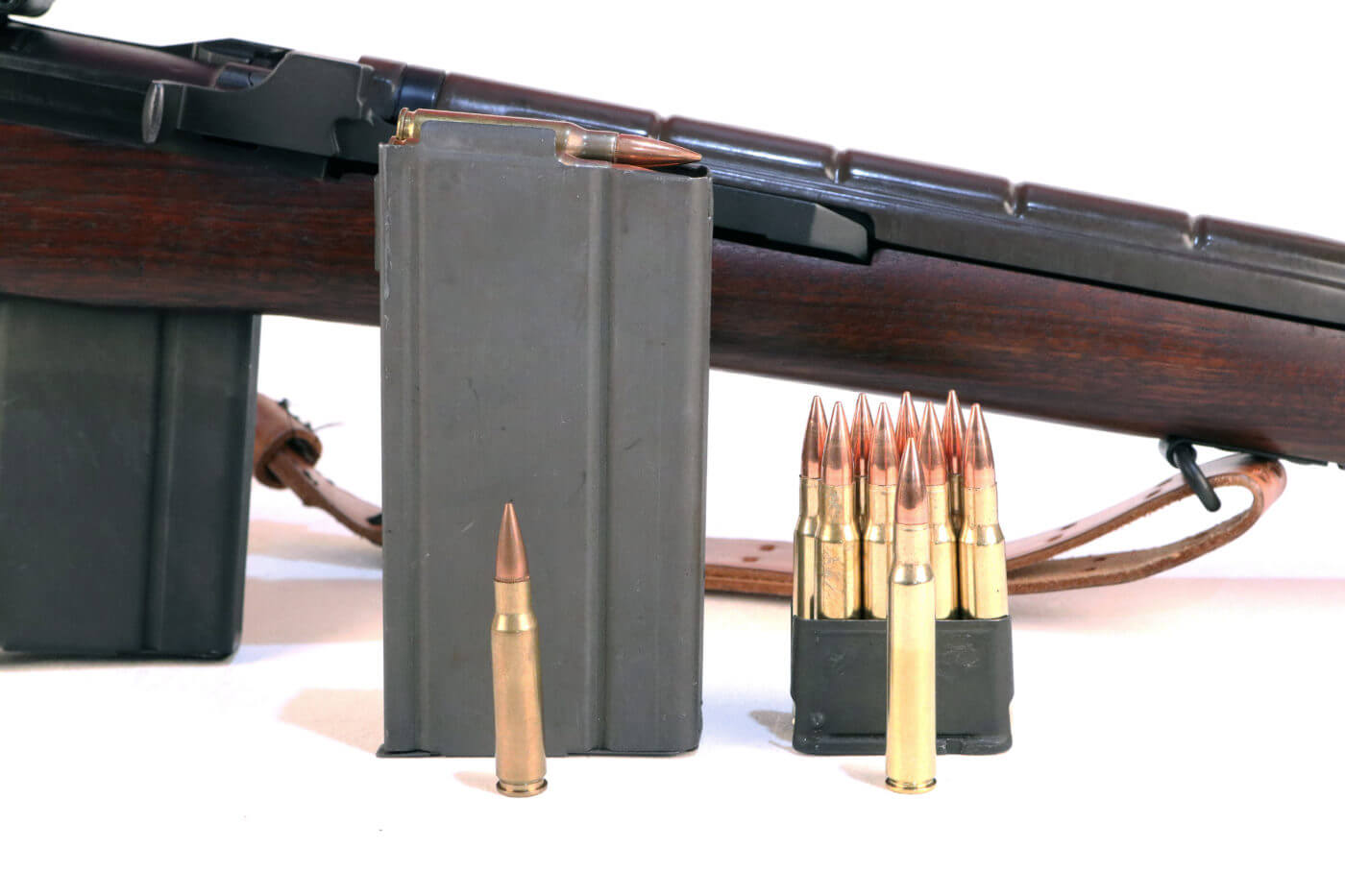
In a perfect world the M14 was supposed to supplant the M1, the M1903 Springfield, the M1917 Enfield, the Carbine, the Thompson, the M3 Grease Gun, and the M1918 BAR. Alas, our world is many things, but it is hardly perfect. As a result, the M14 spent less than a decade as the U.S. Army’s primary infantry arm.
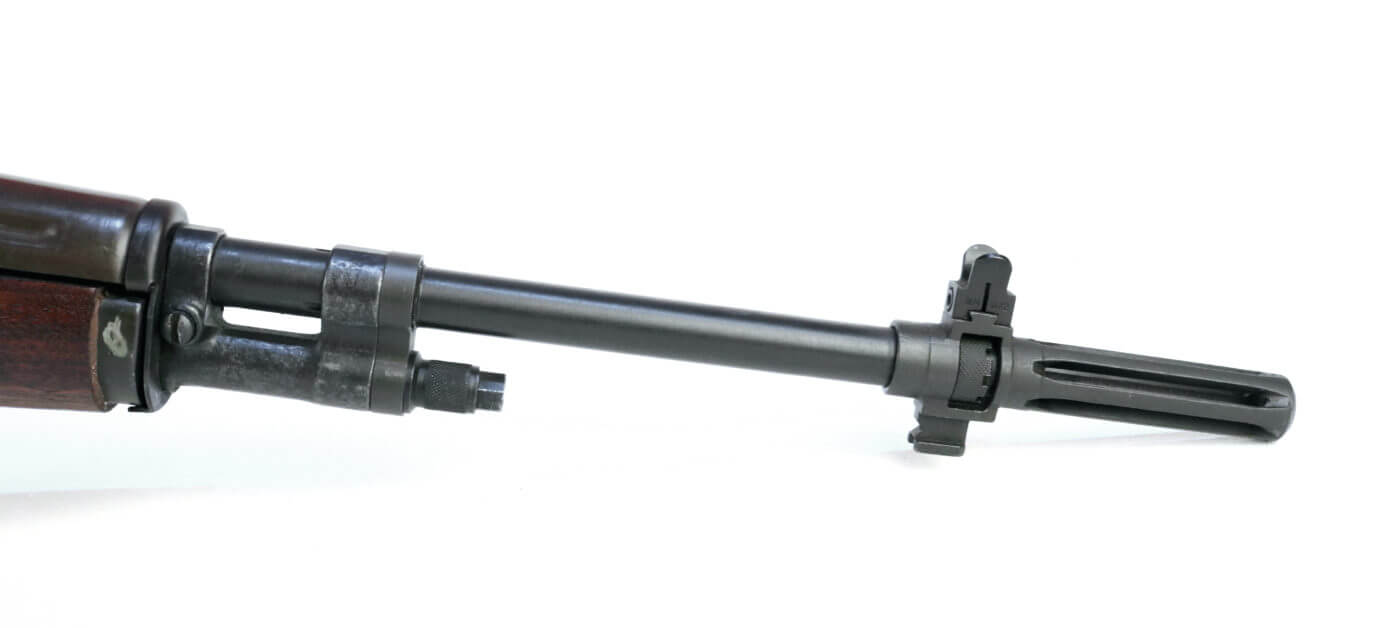
Timeless Power
Uncle Sam got himself sorted out eventually, and the M16 which supplanted the M14 has gone on to become the longest-serving infantry rifle in American history. However, as we discovered in the vast barren wastes of Afghanistan, there yet remains a need for a man-portable rifle capable of projecting a bit more authority than the .22-caliber Eugene Stoner gun.

Even with more than half a century under its belt, the argument can be made that the M14 still fills that particular niche better than anything else. And if you want to own your own version of a rifle inspired by the classic M14, the Springfield Armory M1A is a great way to get as close to an original 1959-era masterpiece as possible without an email address that ends in .gov.
Modern Treatment
I’ve long been a fan of the Garand, and my WWII-era Springfield Armory M1 came from the Directorate of Civilian Marksmanship (CMP) and has seen some fairly serious mileage. The finish is worn, and the cracked front handguard has been skillfully repaired by ripping slots crossways and gluing in wood scraps. As a result, the old girl just reeks character.
The purist might look down his long Roman nose at my hard-use battle rifle. However, I’m crazy about mine just for the scars. Hopefully my wife feels the same about me.

I bought my Springfield Armory M1A back in 1987. It has ridden within a high-tech polymer Archangel stock and sported some very nice precision glass. However, when the dust settles I always seem ultimately to bed her rugged reliable action down within that inimitable stained walnut.
These days local gun emporia are littered with black rifles conjured from CNC-cut aluminum and plastic molded in some antiseptic lab — and they can be great guns. However, I will forever have a soft spot for that manly .30-caliber action and the intoxicating sensation of aged walnut against my sweaty cheek.
Join the Discussion
Featured in this article
Continue Reading
Did you enjoy this article?

 438
438








